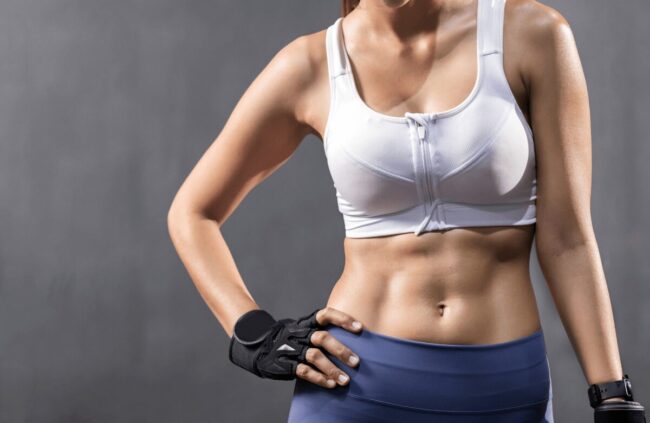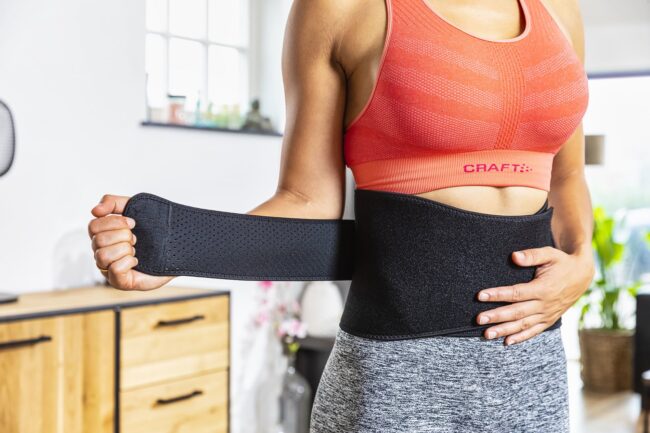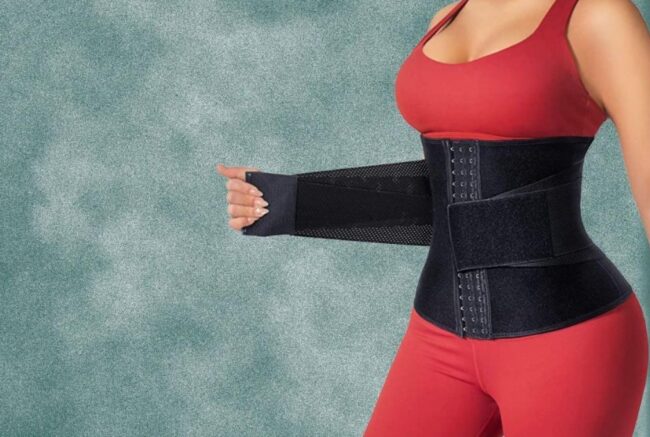Every woman’s dream of achieving that perfect hourglass figure has often led to the adoption of various fitness and fashion practices.
Among them, waist trainers have gained immense popularity. But is it just a fleeting trend or a reliable way to sculpt your waistline? Let’s dive deep.
1. Understanding Waist Trainers

Waist trainers, rooted in the ancient practice of corsetry, are tight-fitting garments worn around the midsection. They apply compression to reshape and mold the midriff over time. Today’s market offers several variants:
- Corset trainers are made of sturdy materials with steel boning.
- Cinchers, softer than corsets, made from latex or other fabrics.
- Belt trainers primarily used during workouts.
Understanding the type and purpose of each can help tailor your waist sculpting journey.
2. Benefits of Waist Trainers
While waist trainers can offer a more cinched waistline temporarily, they also have the potential to improve posture, primarily by prompting wearers to stand straighter.
This improved posture, along with the perceived sleeker silhouette, can significantly boost confidence and self-esteem. Nonetheless, it’s pivotal to note that the coveted illusion of an hourglass figure is often just that—an illusion.
While some physical changes might occur, the benefits of waist trainers are often more psychological, providing wearers with a temporary sense of satisfaction and allure.
3. When to Incorporate Waist Trainers
Think of waist trainers akin to high heels—a quick aesthetic fix primarily meant for special occasions rather than daily wear. They can indeed be the perfect accessory for that special event where you aspire to showcase a form-fitting dress or a certain silhouette.
However, relying on them daily might not be the most prudent choice, especially considering potential health concerns.
Like stilettos, which can strain your feet with prolonged use, abdomen trainers can exert pressure if misused or overused.
4. Setting Realistic Expectations

Can waist trainers permanently reduce waist size? The short, straightforward answer is no. They can provide a temporary reshaping of your midriff, making outfits look more flattering momentarily.
However, for sustainable, long-term results, it requires more holistic approaches like proper diet and exercise. It’s absolutely essential to have realistic expectations.
Understand that no single tool, however popular or endorsed by celebrities, can dramatically and permanently alter your body’s natural structure.
5. Pairing Waist Trainers with Diet and Exercise
A waist trainer is certainly not a magic pill or a shortcut to achieving a svelte figure overnight. For tangible and lasting results, it’s paramount to pair it with a balanced diet and regular exercise.
This combination helps in toning and strengthening the body.
Engaging in core-strengthening exercises like planks, leg raises, and Russian twists not only enhances muscle tone but also can amplify the effects of the waist trainer, ensuring that the body remains strong and well-defined.
6. Choosing the Right One
When selecting a waist trainer, comfort should be your topmost priority. Seek a waist trainer constructed of breathable material to prevent excessive sweating or discomfort.
The fit is equally crucial; it should be snug enough to offer compression without causing discomfort or restricting breathing.
Equally, it shouldn’t be too loose, or its efficacy diminishes. Always prioritize factors like the material from which it’s made, the size that corresponds to your body, and the style that aligns with your purpose and aesthetic preferences.
7. Gradual Progression

When introducing a waist trainer into your routine, patience is crucial. Avoid wearing your waist trainer for extended periods right off the bat. Start with a manageable duration, say an hour, then build up incrementally, adding a few minutes every day.
This is to ensure your body acclimates to the compression without undue stress. Over-compression or prolonged wear can restrict blood flow, cause muscle weakness, and even affect digestion, among other concerns.
Being cautious and understanding your body’s limits will aid in a safer midriff training journey.
8. Monitoring Your Body
The key to any fitness or fashion endeavor is tuning into your body’s signals. Listen to its cues. Feelings of extreme discomfort, breathlessness, or sharp pain aren’t typical.
Such signs indicate that the waist trainer might be too tight or not the right fit for your body shape.
Moreover, persistent discomfort can hint at potential long-term health issues. While achieving an hourglass figure might be the end goal, it’s imperative to ensure that health and safety aren’t compromised for aesthetics.
9. Alternatives to Waist Trainers
Waist trainers aren’t the only means to achieve a toned midsection. If you’re hesitant about waist trainers or have experienced discomfort using them, several alternatives focus on strengthening the core.
Activities like Pilates and yoga not only enhance flexibility but also target the abdominal muscles. Regular strength training routines, incorporating exercises like squats, deadlifts, and oblique twists, can contribute to a more defined abdomen.
Embracing these alternatives ensures you work towards your desired shape without the constraints and potential discomfort of a waist trainer.
10. Consulting with Professionals

Taking a DIY approach to waist training without proper knowledge can be risky. Before adopting this or any body modification method, it’s wise to consult with someone well-versed in the field.
Fitness trainers can provide insights on proper techniques and usage frequency, ensuring you get the most out of the practice without overdoing it.
Medical professionals or physiotherapists can offer advice on potential health implications, especially if you have existing medical conditions. Their guidance can help create a roadmap tailored for your body’s specific needs.
11. Maintenance and Hygiene
Like any other garment that comes in direct contact with your skin, waist trainers require meticulous care. Given that they are tight-fitting, they absorb sweat, which can lead to bacterial growth if not cleaned regularly.
Adhering to the care instructions, which typically involve hand washing and air drying, ensures the trainer retains its shape and efficacy. Wearing a thin cotton layer underneath can serve as a barrier between the trainer and the skin, minimizing risks of skin irritations.
Moreover, inspect your midriff trainer periodically for signs of wear and tear. A damaged trainer can unevenly distribute pressure, causing discomfort or potential harm.
12. Balancing Fashion and Function
The intersection of fashion and fitness has seen waist trainers emerge as a trendy accessory for many. Social media influencers and celebrities have popularized them, often showcasing them as must-have fashion-forward items.
If you’re using a midriff trainer primarily as a style statement, it’s essential to strike a balance. Aesthetic appeal shouldn’t overshadow comfort and health.
Just because it looks good doesn’t mean it feels good or is good for you. Always prioritize function and well-being over fleeting fashion trends.
Conclusion

As with any journey, waist training requires dedication, patience, and, most importantly, knowledge. While abdomen trainers can be a beneficial tool in achieving that coveted silhouette, they come with their set of challenges and considerations.
The goal should always be a balance between appearance and health. Using them judiciously, in tandem with other health and fitness practices, can yield the best results.
After all, the true essence of beauty is rooted in health and well-being
